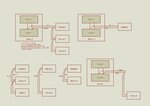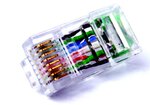dhruv_electro
Advanced Member level 4
We are designing various devices for a system which communicate over the CAN bus using 250kbps. Requirement of the termination resister is as follows please see attached image:

1. Termination should be on PCB not on Cable.
2. In any configuration Communication should be possible, i.e. any two device should communicate even if we plug in or plug out other devices.
3. Any plug in and plug out will occur in power off state only.
4. Please see image We can not determine where the second end of bus will be, as first end of bus is fixed at Device 1 (Function 1). But it may be possible (as seen from image) that device 1 will not present in bus.
Is there any possible solution of termination resistor?

1. Termination should be on PCB not on Cable.
2. In any configuration Communication should be possible, i.e. any two device should communicate even if we plug in or plug out other devices.
3. Any plug in and plug out will occur in power off state only.
4. Please see image We can not determine where the second end of bus will be, as first end of bus is fixed at Device 1 (Function 1). But it may be possible (as seen from image) that device 1 will not present in bus.
Is there any possible solution of termination resistor?

